Analysis
How Do Consumers Actually Feel About AI-Powered Advertising?
by Stephen Graveman6 min read
Abstract
- Consumers aren’t as thrilled as advertisers with generative AI
- 78% of consumers polled believe generative AI is the future — but only 39% are excited about that future
- 78% of consumers want brands to be transparent when they’re using AI
- To combat skepticism and concern, brands are going to have to apply extra effort when using generative AI
Few letters have ever been as buzzworthy as “A” and “I” have been this year. In what felt like an overnight transition, generative AI could suddenly be found everywhere—assisting our web searches, writing copy, designing images, powering our music playlists, and even assisting in advertising.
But while every brand seems to be rushing to adopt generative AI into its offerings, we haven’t heard much about what the consumer actually thinks of this new technology. How are today’s audiences feeling about this giant leap forward? And what do they think of the ads it’s producing?
Like anything involving new and disruptive technology, the answer is a mix of excitement, interest, concern, and fear—and advertisers need to understand why consumers feel this way before diving into artificial intelligence themselves.
Consumer Familiarity With AI
While brands and advertisers spent the last year excitedly following AI’s advancements, it’s important to note that today’s consumers might not be as familiar—let alone as interested.
According to a study by Dentsu, while 87% of consumers say they’ve at least heard of AI, only 61% say they at least somewhat understand what generative AI is and how it works.
Even fewer want to know more or have used these tools themselves – just 42% report being interested in generative AI tools, and only 27% have used them.
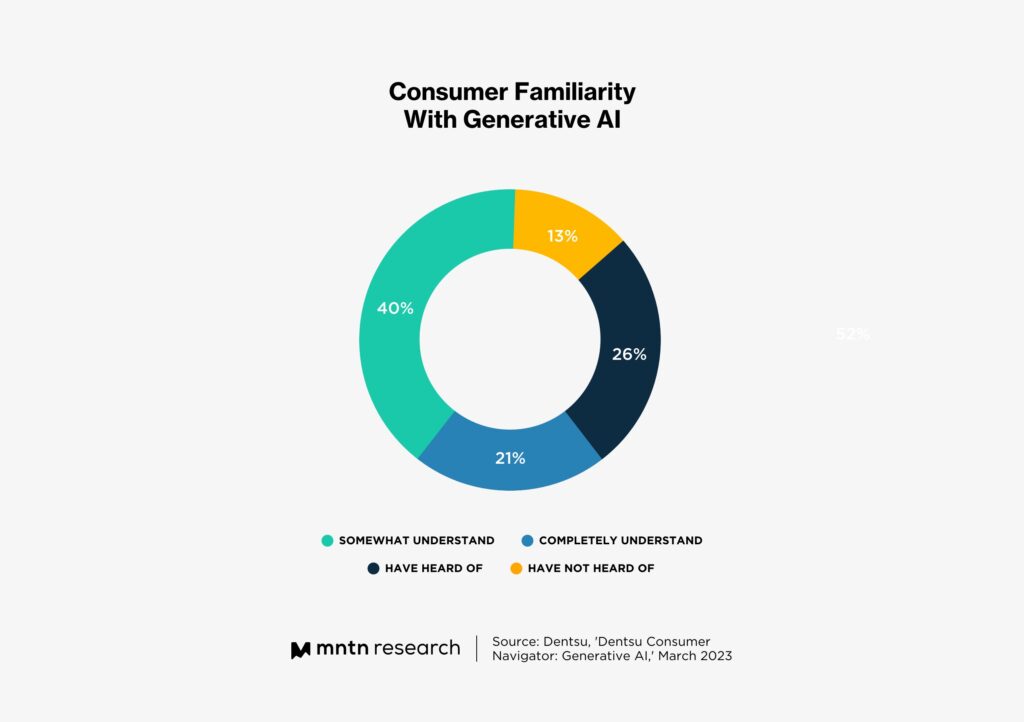
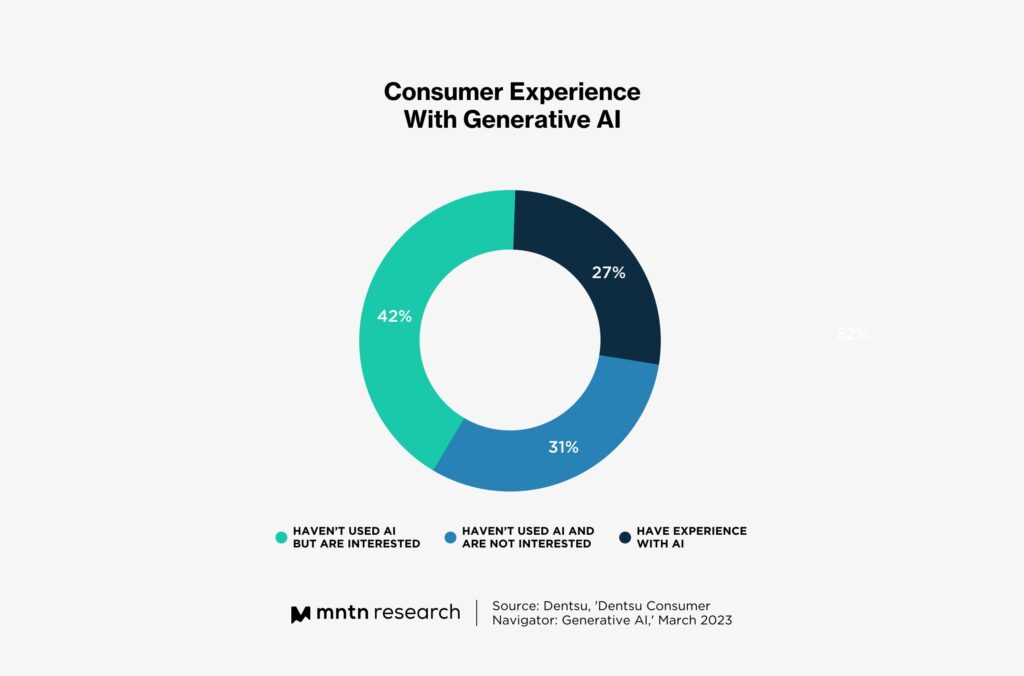
Consumer Outlook on AI
Given this unfamiliarity, it makes sense that consumers’ feelings about generative AI and its future are mixed. 78% of consumers polled believe generative AI is the future. However, only 39% of them are excited about this future. 61% remain either concerned or undecided.
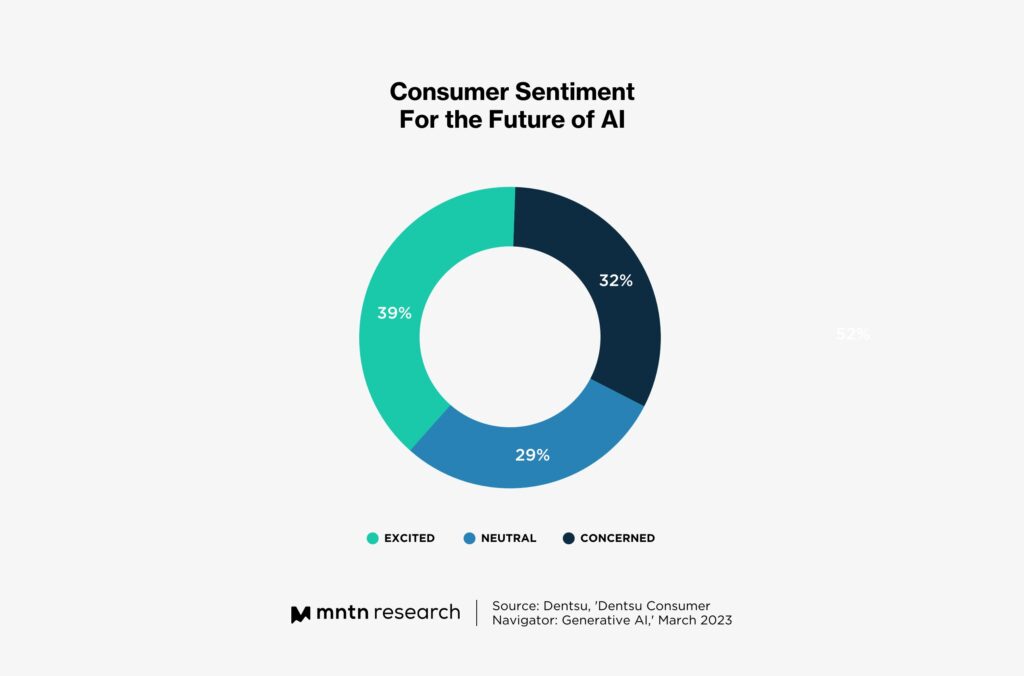
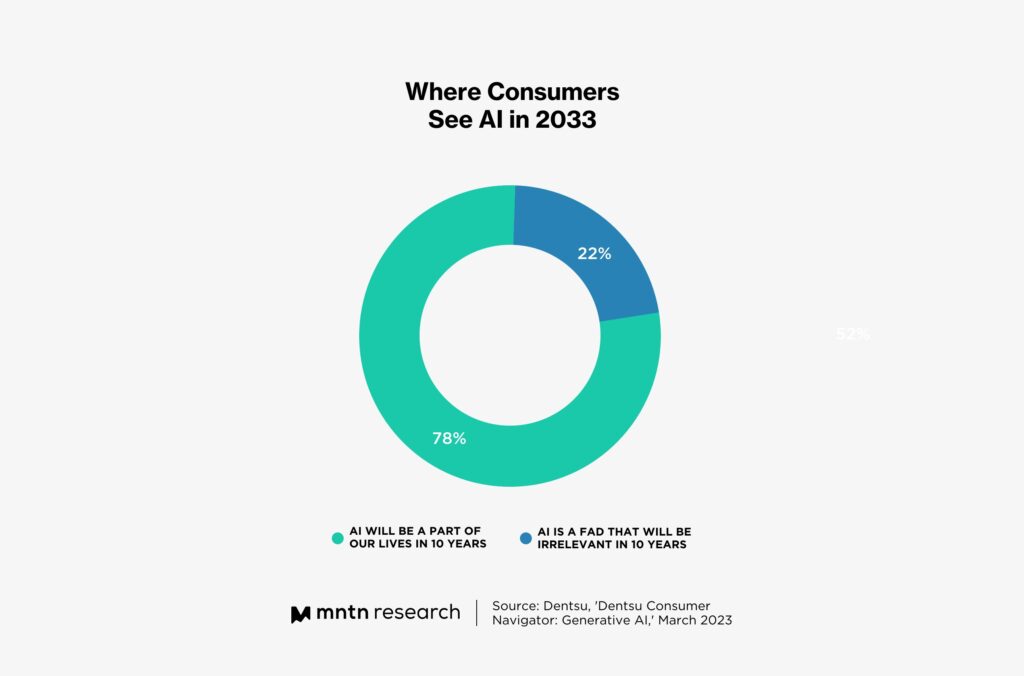
Clearly, a plurality of consumers see generative AI as a technology that’s here to stay, and most are excited about its possibilities. That said, there are still plenty of concerns about its future.
But what exactly are those concerns? When consumers were asked, 45% said they worried it would impact their job. Meanwhile, 36% worried about the technology’s impact on creative outputs—and whether it’d result in worse content, like advertisements. 37% think it’ll have negative effects that we can’t foresee at the moment.
Still, it’s not all doom and gloom: 57% agree that generative AI will make their day-to-day lives better in the future. Bucking the potential preconceptions that new technology is always more popular with younger audiences, this positive outlook was mostly driven by millennials (73%) followed by Gen X (58%) and Gen Z (56%).
Expecting More From Brands
80% of consumers say they trust either Big Tech or emerging tech companies to develop AI responsibly. But that trust doesn’t translate to other sectors—less than one-third trust brands to do the same.
When it comes to specific verticals, consumers see the most opportunity for generative AI to positively impact tech, entertainment, and shopping experiences. The most skeptical categories were sports, arts/culture, and customer service—three categories that arguably benefit most from the human touch.
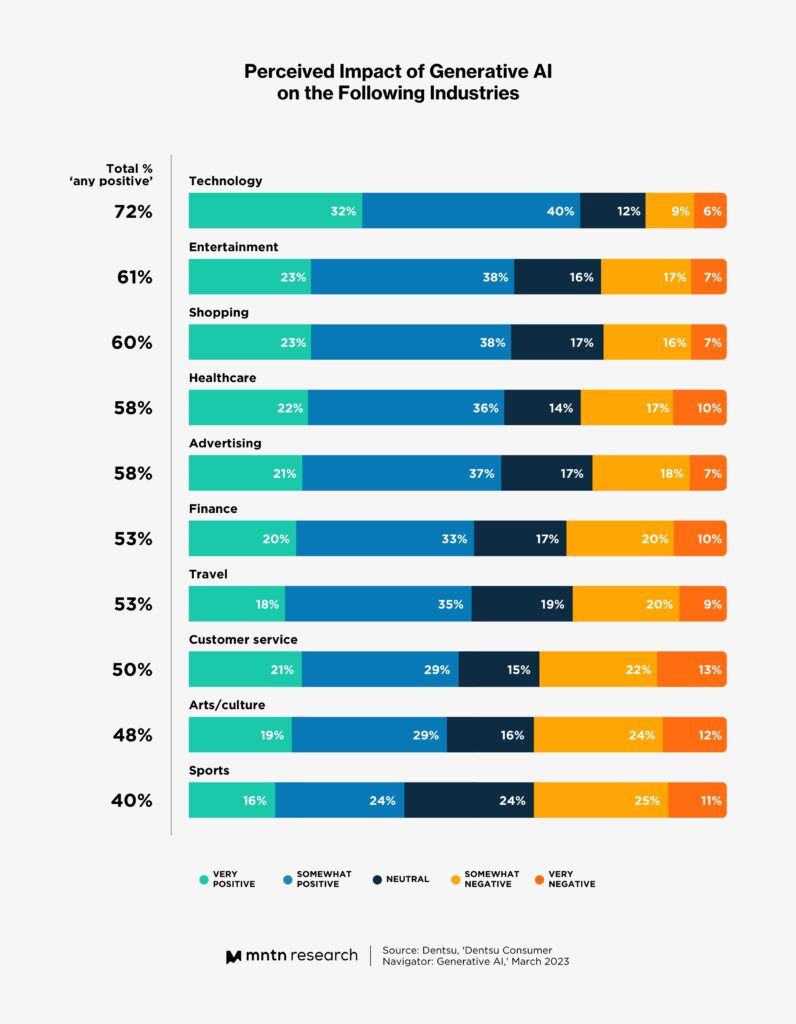
So is there a way for brands and advertisers to adopt this technology into their strategies successfully? For consumers, it’s a matter of transparency:
- 78% want brands to disclose when a service uses AI
- 78% want brands to disclose when consumers have interactions powered by AI
- 75% want brands to disclose if branded content was created by AI
- 73% want brands to disclose if a product was designed with AI
For marketers, the lessons are clear: most consumers expect brands to use generative AI for content, but they want to know about it. Savvy brands can get a headstart by developing communications strategies and frameworks for disclosing AI-generated content, especially as the technology continues to play an increasingly significant role in consumer-facing content.
Consumers are also approaching AI with a conscience—and looking out for their fellow humans first and foremost. 72% of respondents want brands to limit their adoption of AI to protect human jobs. Similarly, 77% of consumers want brands to actively ensure that the AI tools they employ don’t exacerbate existing biases and systems of inequality.
Lessons For Marketers
While most consumers haven’t used AI firsthand, they remain interested or excited in the technology—as long as it’s not hurting people, and brands are being transparent with its usage,the opportunities it offers are virtually limitless. If the industry can heed this, the advertising space won’t be overrun with AI-generated content any time soon.
Emphasis on “if the industry can heed this.” Brands are going to have to put in some extra effort to combat the biggest barriers to generative AI—consumer skepticism and concern. To do this, marketers will likely need to use these tools to help shape quality end results and inform or augment their human-created campaigns—not replace them. This means using the technology to create effective, compelling, and potentially targeted experiences that do not feel robotic or lacking in emotion.
Moreover, brands can address ethical concerns by being proactive and transparent about their usage of the technology, promoting its benefits and uses, and communicating how it’s creating new jobs or protecting existing ones.
By being transparent and responsible, not only are brands being ethical and meeting consumer expectations—they’re helping to ease the public into the nascent technology’s mass adoption. Already, we’re seeing signs that consumers aren’t just getting used to AI—some actually prefer brands that use it over ones that don’t.
- 42% prefer brands that use AI to design products and services
- 41% prefer brands that use AI in their customer experience
- 34% are willing to pay more for products and services that are designed with AI
Final Thoughts
While the percentage of people who prefer AI is still small compared to the larger majority (which either isn’t willing to pay more for AI-created products or would rather brands avoid them), they do suggest a decent number of people can see the benefits of the technology. And considering this is a bell that can’t be unrung, it’s likely this audience will continue to grow as the benefits become more clear and audiences get used to having AI in their lives. It behooves brands to begin preparing for the AI future now to meet consumer expectations.
Subscribe to the MNTN Research Weekly
Sign up to receive a weekly feed of curated research, sent straight to your inbox.